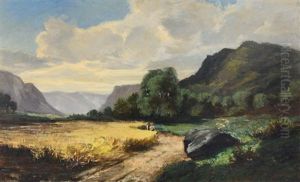Giovanni Beltrami Paintings
Giovanni Beltrami was an Italian explorer, born in 1779 in Bergamo, Lombardy. Although not as widely recognized as some of his contemporaries, Beltrami played a significant role in the exploration of North America, particularly in the early 19th century. His contributions to the exploration of the Mississippi River and its tributaries are among his most notable achievements. Apart from his exploration work, little is known about his early life and education, reflecting the era's limited documentation and the exploratory focus of his career.
In 1823, Beltrami embarked on a journey with the intention of discovering the source of the Mississippi River. He joined forces with Stephen H. Long's expedition but later separated from the group due to differences in objectives and methods. Beltrami continued his exploration independently and ventured into the territories that are now part of Minnesota. During his explorations, he claimed to have found the true source of the Mississippi River at Lake Julia. However, his claim was disputed and later disproved; the true source, Lake Itasca, was identified by Henry Schoolcraft in 1832.
Despite the controversy over his claim, Beltrami's contributions to the exploration of the American Midwest were significant. He was one of the first Europeans to extensively document the geography, flora, and fauna of the region, as well as the customs and languages of the Native American tribes he encountered. His observations were later published in a book titled "A Pilgrimage in Europe and America, Leading to the Discovery of the Sources of the Mississippi and Bloody River," which provided valuable insights into the early 19th-century American frontier.
Beltrami's later years were spent in Italy, where he continued to write and publish works on various subjects, including his explorations. He passed away in 1855 in Filottrano, Italy. Despite the controversies and challenges he faced during his lifetime, Giovanni Beltrami's adventurous spirit and contributions to the exploration and documentation of early America have earned him a place in the annals of exploratory history.




